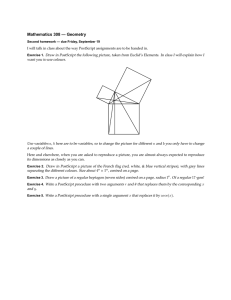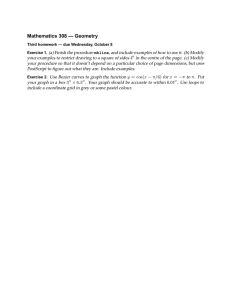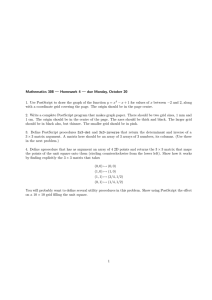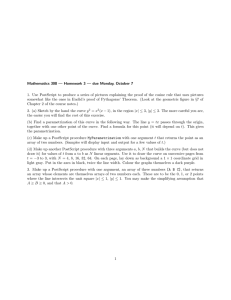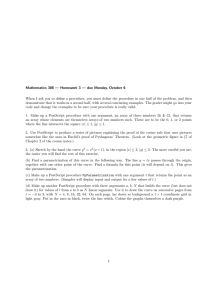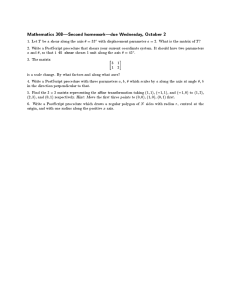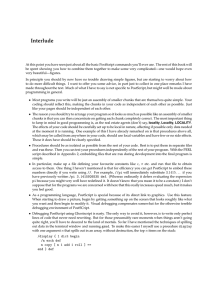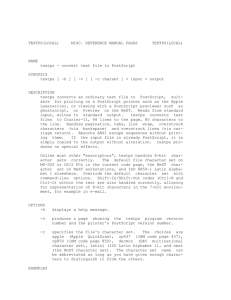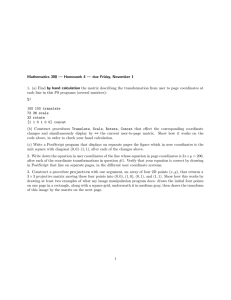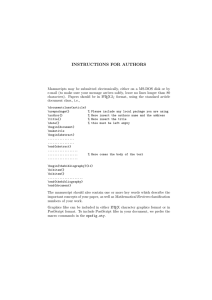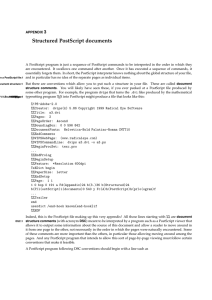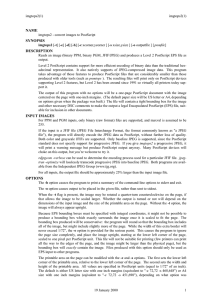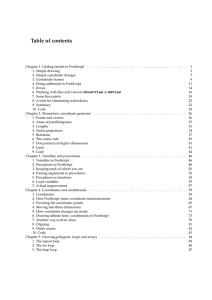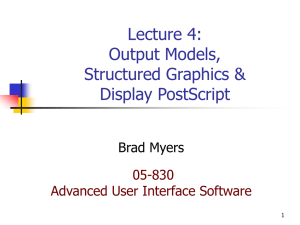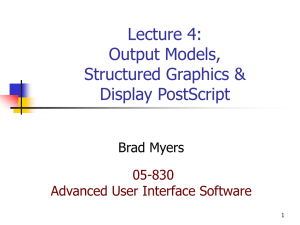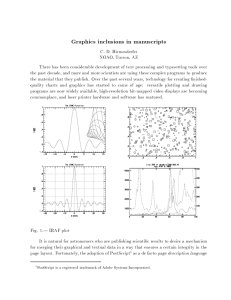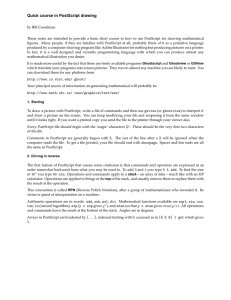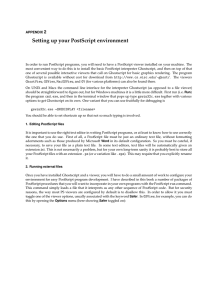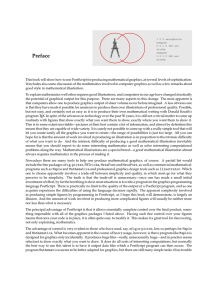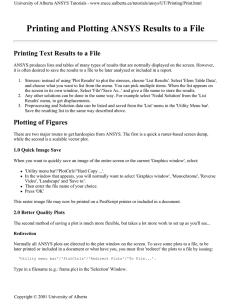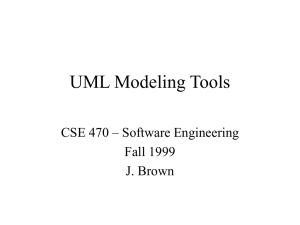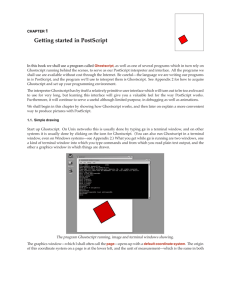Review for Mathematics 308—Fall 1998
advertisement
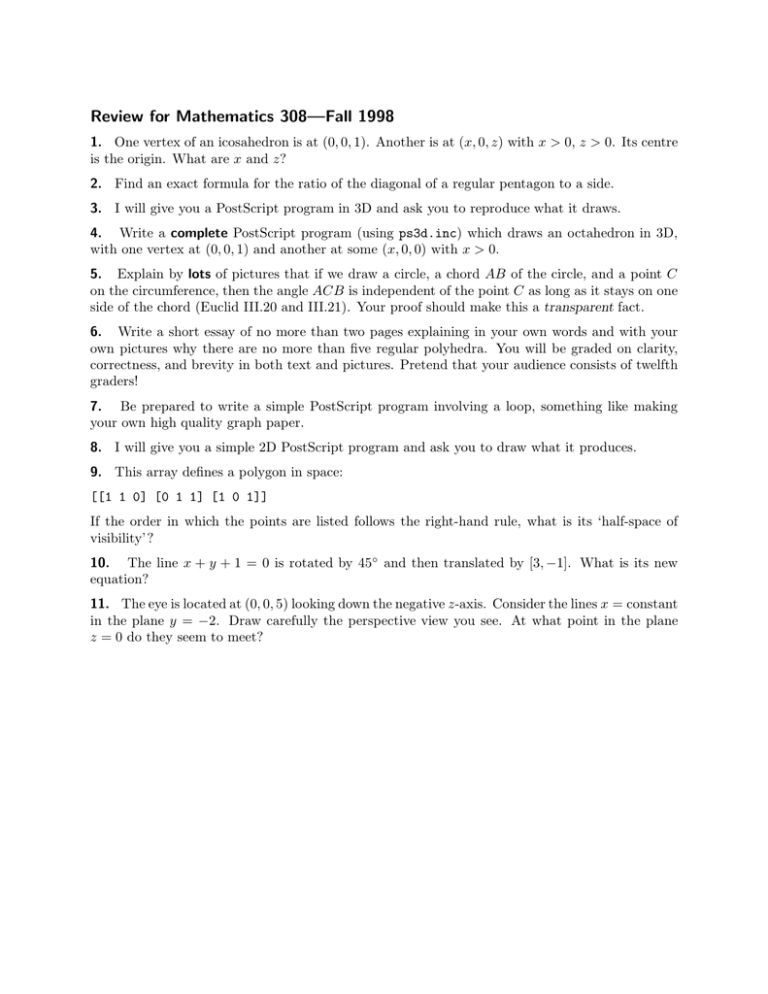
Review for Mathematics 308—Fall 1998 1. One vertex of an icosahedron is at (0, 0, 1). Another is at (x, 0, z) with x > 0, z > 0. Its centre is the origin. What are x and z? 2. Find an exact formula for the ratio of the diagonal of a regular pentagon to a side. 3. I will give you a PostScript program in 3D and ask you to reproduce what it draws. 4. Write a complete PostScript program (using ps3d.inc) which draws an octahedron in 3D, with one vertex at (0, 0, 1) and another at some (x, 0, 0) with x > 0. 5. Explain by lots of pictures that if we draw a circle, a chord AB of the circle, and a point C on the circumference, then the angle ACB is independent of the point C as long as it stays on one side of the chord (Euclid III.20 and III.21). Your proof should make this a transparent fact. 6. Write a short essay of no more than two pages explaining in your own words and with your own pictures why there are no more than five regular polyhedra. You will be graded on clarity, correctness, and brevity in both text and pictures. Pretend that your audience consists of twelfth graders! 7. Be prepared to write a simple PostScript program involving a loop, something like making your own high quality graph paper. 8. I will give you a simple 2D PostScript program and ask you to draw what it produces. 9. This array defines a polygon in space: [[1 1 0] [0 1 1] [1 0 1]] If the order in which the points are listed follows the right-hand rule, what is its ‘half-space of visibility’ ? 10. The line x + y + 1 = 0 is rotated by 45◦ and then translated by [3, −1]. What is its new equation? 11. The eye is located at (0, 0, 5) looking down the negative z-axis. Consider the lines x = constant in the plane y = −2. Draw carefully the perspective view you see. At what point in the plane z = 0 do they seem to meet?
